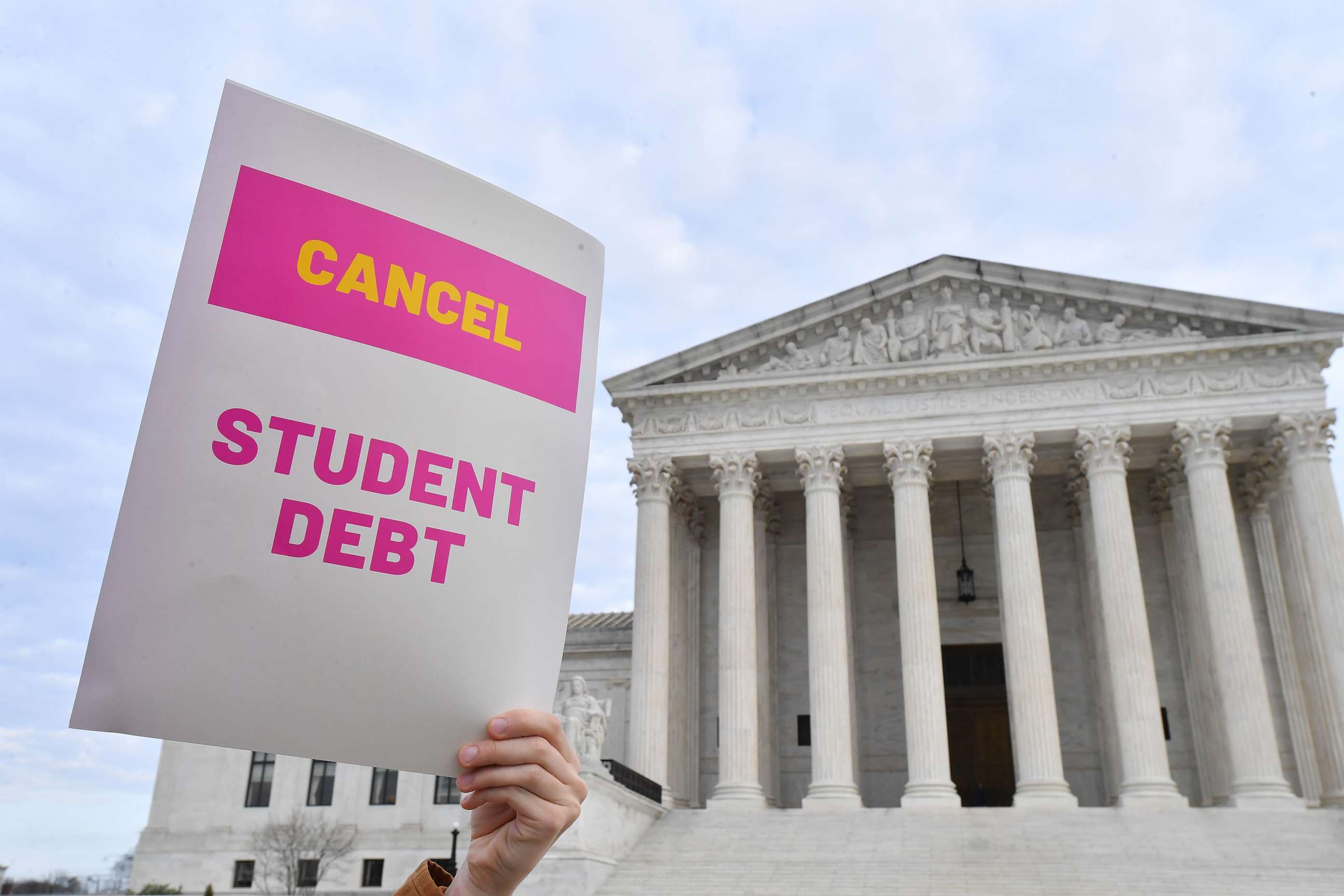The student loan challenge: Here's what to do when payments resume
Payments are set to restart in October, and borrowers should prepare now.
Millions of Americans will have to prepare to repay their student debt now that the Supreme Court has overturned President Joe Biden's loan-forgiveness plan. The plan would have wiped out up to $20,000 in federal student loan debt for qualified borrowers.
After a three-year pause put in place during the pandemic, federal student loans will start accruing interest again on Sept. 1, and payments will resume in October.
The renewed student loan bills may come as a shock to the more than 43 million borrowers with federal loans. Borrowers who left school in 2020 or later will also need to prepare to make their first-ever student loan payments.
Biden said he was "discouraged" and "angry" after the Supreme Court's 6-3 decision to overturn his plan. In a speech at the White House Friday afternoon, the president promised to pursue a new path for student loan forgiveness through the Higher Education act of 1965. The act gives the secretary of education, rather than the president, broad authority to "compromise, waive or release" debt in certain instances, though legal scholars say it too is expected to face legal challenges.

Here's what you need to know as you gear up for those payments to resume:
First, locate your student loan servicer, since the company that manages your student loans may have changed over the past three years. You can find your loan servicer by logging on to studentaid.gov.
Next, make sure your loan servicer has accurate and up-to-date contact information. Repayment start dates will differ depending on who manages your loan, so be sure to ask when payments will resume and how much you'll owe each month, once they do.
That means tough decisions for many borrowers, especially those who are already struggling to make ends meet at the end of the month. But not paying your bill on time or at all can have severe consequences, including denting your credit score and excluding you from future federal aid.
Student loan repayment is not a one-size-fits-all proposition. It depends on a number of things, including the kind of loan you have, so ask your loan servicer about payment plans that are available to you.
Several federal plans base your payments on your income and family size. Income-driven repayment plans, such as Pay As You Earn and Revised Pay As You Earn, can make your payments more manageable and, in some cases, could push your payment as low as $0 per month.
Hours after the high court struck down the Biden administration’s loan-forgiveness plan, the president made terms of IDRs more generous.

The plans will now cut in half the amount that qualified borrowers have to pay each month, from 10% to 5% of their discretionary income. The plan also raises the amount of income considered non-discretionary, which is not considered for repayment, to ensure borrowers earning less than $15 an hour will not need to make monthly payments. The repayment sunset for borrowers with loans of less than $12,000 was also decreased from 20 years to 10, meaning those borrowers’ loan balances will be forgiven after a decade.
The Biden administration will also give borrowers some breathing room with a temporary 12-month on-ramp repayment program starting on October 1. Under the program, interest will still accrue on the loan, but the Department of Education will not refer borrowers who miss monthly payments to credit agencies for 12 months, removing the threat of default and protecting a borrower’s credit score.
If you can't keep up with payments, ask your lender about a deferment or forbearance period.
According to Bankrate, if you qualify for student loan deferment, it's usually a better option. You may be able to freeze payments for longer than you would in forbearance, and unlike forbearance, interest won't accrue if you have subsidized loans or Perkins Loans. But, Bankrate advises that if there's no deferment available, apply for forbearance.
If your student loans were in default before the freeze, enroll in the federal government's temporary "Fresh Start" program. Approximately 7.5 million borrowers have federal student loans in default, according to federal data. Among other things, the "Fresh Start" program will return loans to "current" status on a borrower's credit reports and give them access to federal student aid and other government loans, like mortgages.
Bottom line, financial experts say don't wait for these student loan repayments to creep up on you. Instead, start budgeting your finances now. Set money aside each month into a high yield savings account or other interest-bearing account so you don't shock your financial system once payments resume.
Editor's Note: This story has been updated.




